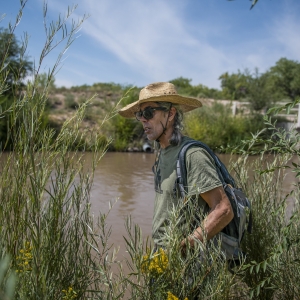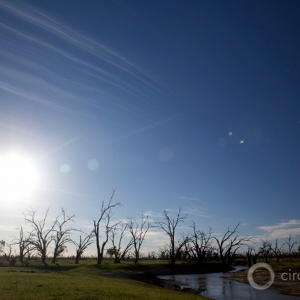Federal Water Tap, October 17: Interior Department Sets Price for Colorado River Conservation
The Rundown
- Interior names its price for water conservation in the lower Colorado River basin that will keep water in Lake Mead.
- The EPA submits draft PFAS drinking water regulations for review.
- Researchers test homes around California’s Clear Lake for cyanotoxins from harmful algal blooms.
- An EPA research office examines better approaches to measuring cumulative impacts of pollution.
And lastly, the U.S. Geological Survey published a new visual representation of the water cycle – adding human influences such as groundwater pumping and urban runoff.
“So much about the water cycle is influenced by our actions, and it’s important that we clearly see the role that each of us can play in sustainable water use amid a changing climate.” — Tanya Trujillo, the Department of the Interior assistant secretary for water and science, referring to the U.S. Geological Survey’s new water cycle graphic.
By the Numbers
$330: Price, per acre-foot, that the Interior Department will pay water users in the lower Colorado River basin to conserve water and keep it in the shrinking Lake Mead. That price is for a one-year contract. A two-year contract is richer: $365 per acre-foot. And for a three-year conservation deal? $400 per acre-foot. Those prices are far less than what irrigators in Arizona had proposed this summer. They were seeking $1,500 per acre-foot. Proposals for the conservation program from water users in Arizona, California, and Nevada are being accepted through November 21.
News Briefs
EPA Submits PFAS Drinking Water Rule for Review
The U.S. Environmental Protection Agency submitted its draft regulations for PFAS in drinking water to the White House Office of Information and Regulatory Affairs for review.
The regulations cover two of the so-called “forever” chemicals: PFOA and PFOS.
The agency’s goal is to publish the draft rules by December and finalize them within 12 months. The chemicals are not currently regulated at the federal level in tap water.
Studies and Reports
Harmful Algal Bloom Toxins in Clear Lake Drinking Water
A study published in the CDC’s scientific journal describes the prevalence of cyanotoxins in the drinking water of homes that pipe water directly from Clear Lake, a waterbody in California that is plagued in the summer by harmful algal blooms.
Researchers identified 493 shoreline parcels that were not within the service boundaries of a public water system and had either a well or a lake intake. Of those, 46 agreed to have their tap water tested.
The period of interest was June to November 2021, when severe toxic blooms appeared in the lake.
Fifteen of the participants had wells. Of the 31 with lake intakes, 22 showed evidence of the toxin microcystin in their tap water. In 18 homes, levels were above the EPA health advisory.
In context: Toxic Cyanobacteria Choke Water Systems around California’s Clear Lake
1+1=3
The EPA Office of Research and Development published a report detailing how its researchers can better address the combined impact of multiple pollutants or existing health disparities.
Cumulative impacts are a priority under the Biden administration’s environmental justice initiatives.
On the Radar
Public Meetings for Lead and Copper Rule
The EPA will host two public meetings to take comments on its revisions to federal rules for lead and copper in drinking water.
The online events, which will focus on the rule’s impact on low-income and communities of color, are scheduled for October 25 from 1:00 p.m. to 4 p.m. Eastern and November 1 from 5:00 p.m. to 8 p.m. Eastern. Register here.
Federal Water Tap is a weekly digest spotting trends in U.S. government water policy. To get more water news, follow Circle of Blue on Twitter and sign up for our newsletter.
Brett writes about agriculture, energy, infrastructure, and the politics and economics of water in the United States. He also writes the Federal Water Tap, Circle of Blue’s weekly digest of U.S. government water news. He is the winner of two Society of Environmental Journalists reporting awards, one of the top honors in American environmental journalism: first place for explanatory reporting for a series on septic system pollution in the United States(2016) and third place for beat reporting in a small market (2014). He received the Sierra Club’s Distinguished Service Award in 2018. Brett lives in Seattle, where he hikes the mountains and bakes pies. Contact Brett Walton







Leave a Reply
Want to join the discussion?Feel free to contribute!